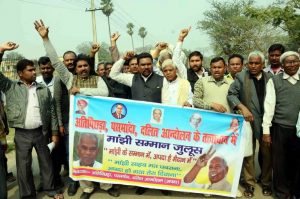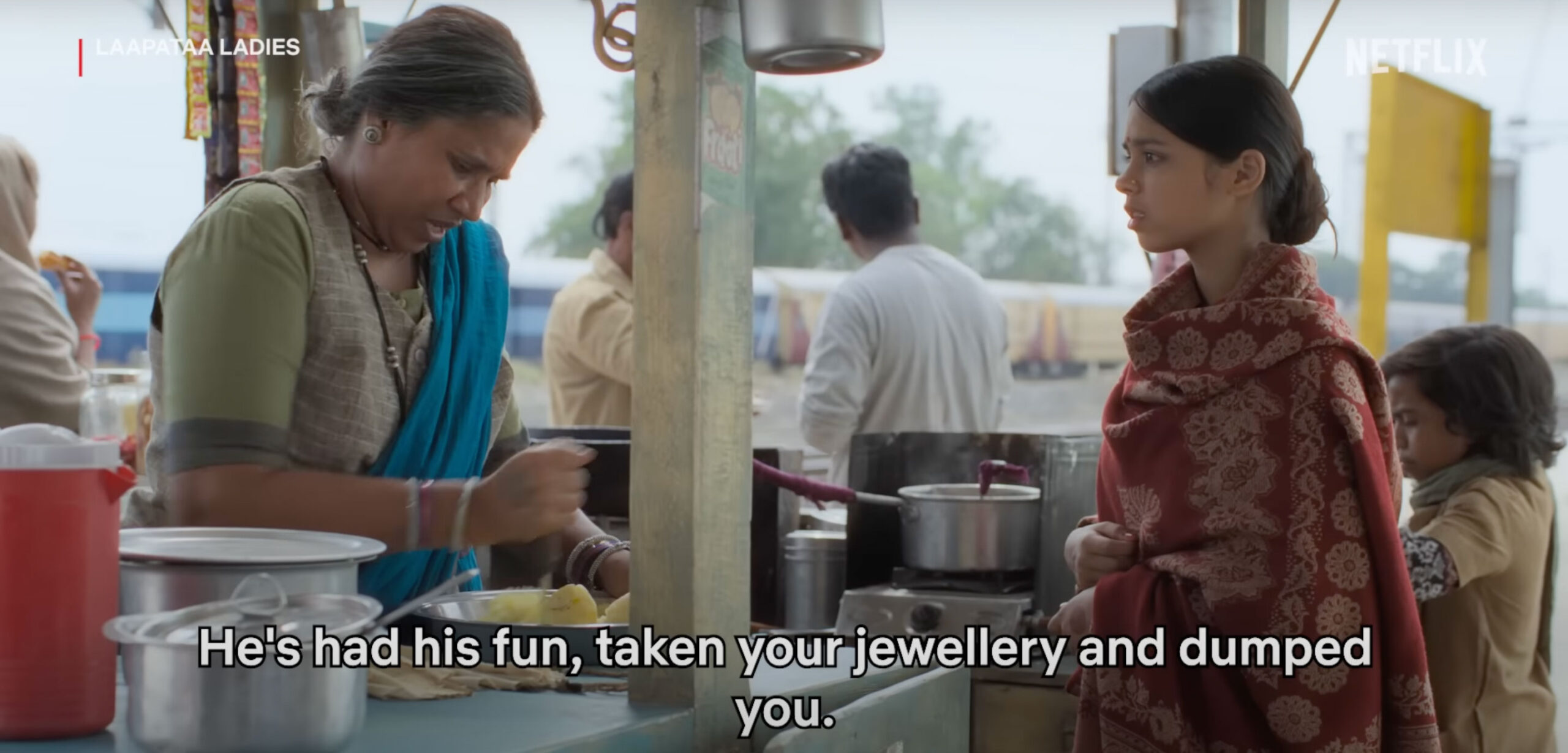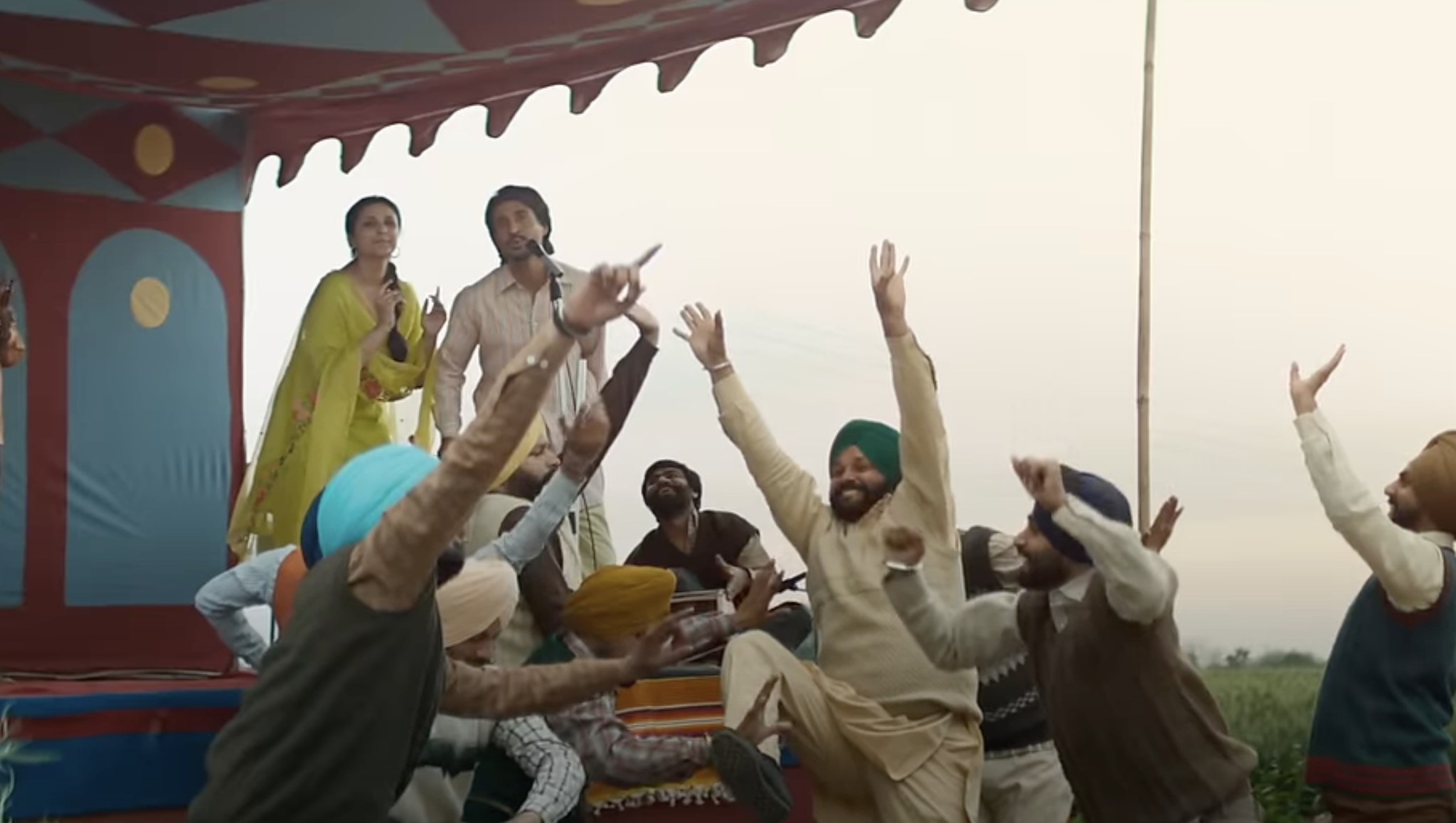Finding an Urdu story with a Pasmanda character is a difficult task. These characters are fewer in Urdu than their equivalent Dalit characters in Hindi.
It is interesting to note that the upper castes in Muslim society go on talking about the caste system among Hindus and its evils but then when the conversation veers to the topic of widespread caste discrimination in Muslim society, they hesitate and deny such a thing even exists.
The upper-caste Muslim writers leave no stone unturned in misrepresenting Dalit characters as the marginalized so that they can continue to grab all the benefits the Muslim community gets from the government because of its minority status. This has been going on for ages. In Urdu, the characters from poor communities are “characters from the margins”, not Dalit Pasmanda.
The basic difference here is that every character from the margins isn’t a Dalit but every Dalit character does belong to the margins. Notably, an upper-caste person will never be a Muslim Pasmanda. The only possibility is that due to his severe poverty he will be cut off from the mainstream and pushed to the margins; therefore, his identity will take the form of a character from the margins. Dalit Pasmandas have been ousted from the mainstream from the ancient times, hence their identity is naturally of a character from the margins.
Before discussing Pasmanda Hindu characters in Urdu, it is important to throw light on Indian Muslim society, because any fictional character is the product of society. The Muslim society in India became divided into two socio-cultural groups, namely Ashraf and Ajlaf. The caste system in Muslim society, its structure, factors that gave rise to the system and the conditions it has created could be the matter of another article but here we will just focus on the Dalit Pasmanda.
Premchand’s short stories
Premchand has a special place in the realm of Urdu short stories. “Sawa Ser Gehu” sheds light on Mahajani exploitation and the interrelation between the influence of labour and the fruit of labour in the minds of Indians. If the Brahmin himself is the Mahajan (moneylender) then what else could be said or done.
The story “Mandir” is about Untouchables not being allowed to enter temples. It was written during the time when Babasaheb Ambedkar led Dharam Satyagrah outside the Kalaram temple in Nashik demanding that Dalits be allowed to enter the temple. In this story, the superstition of the village head is extreme.
On 14 February 1933, Babasaheb Ambedkar ignited a feeling of dignity among Dalits when he released a statement clarifying to the Hindus that for the Dalits, being able to enter the temple was not the ultimate goal. However, Sukhiya’s first and last destination was the temple.
The story “Mantar” has many aspects to it. One, the story sheds light on the moral values in an ordinary Dalit man. Two, it also manifests the victory of truth in the emotional dilemma of Bhagat.
The human traits in Bhagat like friendship, brotherhood and willingness to share in the pain and suffering were not in Dr Chaddha, who is a Brahmin. These values are the aspects of Bhagat’s personality that shine.
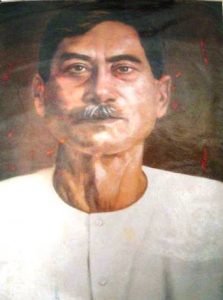
The story “Nek Bakhti” revolves around the themes of untouchability and purity. Premchand was member of the Arya Samaj. Dayanand Saraswati’s thoughts had left a deep imprint on his mind. The Rajdharma of Manu was Dayanand’s political ideal.
Bholanath says humility, etiquette, knowledge and friendship are qualities of Brahmin and “I consider you a Brahmin”. If abilities and actions determine varna then what is the need to say that “these are a Brahmin’s qualities and I consider you a Brahmin”? This is why Ratna says, “No, he doesn’t know. Never say that. Don’t even let it slip out. He will end his life.”
In other words, Nathuram boasts all the abilities and actions that, according to Rai Sahab, a Brahmin does but Rai Saheb will never accept him as his son-in-law if he finds out that he belongs to the Untouchable (bhangi) caste. Rai Saheb would kill himself in shame.
Nathu asks Ratna’s English teacher whether she has any plans to make him a Christian and says assertively that he will never be a Christian and runs away.
It is strange that a boy, who has been beaten up so badly and is wandering in the street hungry and thirsty, would turn down such a good opportunity only because he fears that he might be converted to Christianity.
The protagonist Mangal in “Dhoodh ki Kimat” is scolded and chased away when he turns up with the dog to lick the leftovers. How would a boy know Hindu or Christian etiquette?
Ironically, Premchand supported the idea of purity (shuddhi) and was against religious conversion. However, in “Nek Bakhti” Nathu’s future as a missionary was secure.
Dayanand Saraswati and Mahatma Jyotiba Phule were contemporaries. Mahatma Phule was educated in a missionary school. While he was in school he came in contact with Western education and thought, which influenced his ideology. After getting beaten up and thrown out of Rai Saheb’s bungalow, the only thing any boy could wish for was his madam’s words that he would get an education, free time to play in the evenings and blazer and trousers to wear. But Premchand doesn’t like this idea and his Nathu runs away. The story “Nijat” is about the inferiority complex of a destitute Chamar and of Pandit’s exploitation.
In Manusmriti, ‘danda’ is equivalent to punishment. It provides a way for an offender to right any violation of Dharma. It is often mentioned in the Manusmriti that religion is punishment.
We get to see how Pandit Ghasiram makes a destitute Chamar to chop his bundle of heavy woods without paying even a penny for his work.
He gets him to load the fodder on to a vehicle and shift it from the threshing floor to another location, clean the floor with a broom and smear the doors with cow-dung. In this way Pandit Ghasiram brilliantly uses religion like a danda.
In the year 1928, when Dr Ambedkar burnt the Manusmriti, he said that Manu had killed the principles of liberty, equality and brotherhood.
In the year 1927, Babasaheb Ambedkar wrote that if the tongue of the person who first called us “untouchable” was slit that very moment nobody would have ever used this word for “us”.
Premchand published “Nijat” in October 1931 as part of the Urdu collection Akhri Tohfa. This was three years after Dr Ambedkar shared his radical thoughts about the Manusmriti and Untouchability, but we don’t see a trace of those thoughts in “Nijat”.
It is noteworthy that it was the Chamars who were first influenced by Ambedkar’s Dalit liberation movement.
Premchand wrote the story “Thakur ka Kuan” in 1932. The Poona Pact had already been signed. Dalits had found their paragon Ambedkar and were fighting for their rights.
Premchand was highly influenced by Gandhism. Besides, Mossanif’s thought and vision have a major impact on the formation of characters. There is a huge difference between Gandhi’s Harijan and Ambedkar’s Dalit.
The Harijan lives like dead soul, having accepted all the exploitation and atrocities as their destiny. They might develop a defiant attitude against these injustices but it remains confined to their minds. On the contrary, Ambedkar’s Dalit is audacious, courageous and infused with zeal and zest to fight against exploitation and live with dignity. His rebel doesn’t just imagine being one but steps into the real world. Gangi’s revolutionary mind ponders over what puts the others above them in the social hierarchy. Yes, their loud talk makes them greater!
But Dr Ambedkar had written a story five years before Premchand wrote “Thakur ka Kuan”. It was about the Mahad struggle. Animals were allowed to drink water from Chavdar lake in Mahad but Dalits weren’t. On 20th of March 1927 the Untouchables reached the lake and drank its water for the first time. The Hindus could not bear the thought of what happened. In Babasaheb’s words, this drove them mad and they went all out against those who dared to pollute the water. But in the end of “Thakur ka Kuan” we see that Gangi runs back home from the well and sees Jokhu drinking the same stinking, dirty water from the pot.
Yesu and Madhav of “Kafan” are living a life of misery. They are seeing society’s realities. Even for those working hard, getting enough food to eat has become difficult. This is how their lackadaisical attitude becomes a way to protect them from exploitation.
In “Ghisu and Zamindar”, where Ghisu chooses not to work, Zamindar also does the same. But the difference between them is that Ghisu is naïve whereas Zamindar is cunning.
While sitting by the fire and eating roasted potatoes, the father and son dream of the delicious food served at a landowners’ wedding procession. Later, while eating puris at a local joint, their desire is fulfilled. When the social system itself is responsible for the pitiable condition of people, the only option left is to go with the flow.
Brahamanism in Islam
Urdu speakers and noted Urdu critics have lavished praise on select Premchand works.
While analyzing Dalit and Pasmanda characters we should only turn to Mahatma Phule and Ambedkar’s philosophies, not to the ideologies of Dayanand, Gandhi, Sayyed Ahmed Khan, Maulana Azad or Mulalizm.
In Hindustan, religion is not as much of an issue as caste. Upper-caste Hindus convert to Islam and Christianity but they are not able to separate themselves from the attitudes that they have inherited from their ancestors, which they very much like and which have found their way into the consciousness. Indeed, the universal truth, which both interesting and bitter, is that Ashraf Muslims behave with Dalits and Pasmandas the same way as upper-caste Hindus behave with Dalits.
Strangely, when it comes to the issues of Dalits and Pasmandas, we always find upper-caste Hindus and Ashraf Muslims standing together. It seems as if both are colluding at an emotional and psychological level. When a Brahmin who converted to Islam demanded the title of Sayyed, Akbar agreed.
What could be the reason that on the question of representation of castes from the lowest rungs of the social hierarchy, brahmanical Prabhash Joshi and you (Saiyed Shahabuddin, All India Muslim Mazlis and Mushavarat) seem to be on the same stage? The reason has become an open secret. Religion may have changed but their mindset with regard to caste hasn’t.
Let’s discuss progressive short stories from the perspective of Dalit and Pasmanda characters. Rashid writes in the story ‘Aftari’ that there were three mosques in Elavah Dharo and the mullahs of the mosque were betting on who among them would fool the uneducated poor the most and snatch the most away their meagre earnings.
These mullahs used to make children read Quran and learn sorcery and black magic, and fool the weavers and blacksmiths. They were living among people who worked hard for a living like termites in the dense forest that gnaw at the trees slowly. They wore white clothes but the ones who fed them were filthy. They were the Sayyeds and gentlemen but the toilers were treated with contempt.
In Hayatullah Ansari’s story “Bhare Bazar”, the character Rakhi is Pasmanda. She is not allowed to take bath in corporation’s bathroom, so she is forced to have her baths in the park. But the Maulvi and others who have achieved sophistication by staring at her body are afflicted with this disease of ogling.
In Khwaja Ahmed Abbas’ story “Lal Aur Peela”, the character Gopal is from the Kumhan caste. He lives in extreme poverty. He falls in love with a girl whose caste puts her beyond his reach. He has a strange desire and to satiate it he makes pictures of beautiful women. He wants to forget the world he is living in and wants to escape from his circumstances. But he gets a first prize for portraying his world and his circumstances. If life is ugly, it must be changed. Escaping it is not the solution. There is only one way to change the system and bring joy to people’s lives. That is by shedding blood.
In Razia Sajjad Zaheer’s story “Neech”, Shyamali is from a low caste. Shyamali appears to solve two kinds of discourses: first, feminism and then, caste. Those who belong to Shyamali’s caste believe in integrity, working hard and earning their daily bread. She has to both bear the pain of being a woman and take the blame for belonging to a lower caste. But she fights against the odds to emerge as a role model in society.
Another story by Razia Sajjad Zaheer, “Moajaja” (miracle) has Majjoshah, who belongs to the ‘Nat’ caste. He earns his daily bread by performing tricks as a tightrope walker. The story deals with the Ashraf caste’s selfishness and nobility and Pasmanda’s deplorable condition. It shows how Ashrafs’ schemings take the shape of rules and drive the uneducated Pasmandas into putting their lives at risk.
Saadat Hasan Manto “Naya Qanoon” (The New Law) is yet another such story. Ustad Mangu, a tonga-driver, is the main character. He works near the sessions court and thus overhears discussions between the lawyers who board his tonga. Every day, they are talking about the new legislation that would bring freedom to the people of India. Mangu starts fantasizing about a free country. His hopes are only shattered. When the new Constitution is actually rolled out, he tells a British soldier that he won’t let him ride his tonga anymore since the country is free, and the soldier beats him up.
The story of Ismat Chugtai “Do Haath” is the story of 50-year-old Mehatrani living in poverty. On the one hand, there is sin of the “decent” castes and respectable families, which we see by the side of the streets or in the drain. On the other hand, the castes that are looked down on, despised, are large-hearted enough to embrace the illegitimate child as if he or she were an angel. Mehatrani does not like the hypocrisy of those wear a cloak of decency. Here, she has the courage to accept any wrong that she has done. She doesn’t pretend that nothing has happened. Ismat Chugtai’s second story “Maile Ka Tokara” portrays the condition of Harijans. The Dalits clean the dirt but the odour is in the mind of the Ashrafs. Just as Hindus show off their purity if they happen to touch an Untouchable, Savarna Muslims also purify themselves if they happen to sit on a Bhangi’s bed. Krishna Chand’s “Kaalu Bhangi” is the story of the communities in the lowest rung of society. His job is to daily clean the mess left behind by patients at the hospital. He endures the trouble so that others can live a comfortable life. But no one thinks about him even for a moment. It feels like Kalu Bhangi is worthless in their eyes – as worthless as the excrement from the human body. If cleanliness is important in human life, so is Kalu Bhangi’s contribution.
Among contemporary stories, in Anwar Kamar’s “Chandni ki Supard”, Kalwa works on a truck used to transport garbage. The atmosphere in which a person lives and works affects him a lot. Kalwa is forced to live like an animal. Life amid the garbage and the stench has conditioned him, to the point of shaping his personality. This story illustrates well how the atmosphere and circumstances affect a person.
Salam Bin Rajjak’s story “Eklavya” shows the Ashrafs’ cunning. The author opposes reservation. He does not think that the demand for reservation is legitimate. In his view, reservation makes the children from poor Ashraf families helpless and powerless. Under India’s caste system, education is out of bounds for Dalits and Pasmandas. The education system that remained intact for centuries in this casteist society was based on Gurukuls that only Brahmins and Kshatriyas could attend.
Shafak’s story “Doosra Kafan” is regarded as a sequel to Premchand’s “Kafan”. Premchand had ended his story by getting Ghisu and Madhav drunk. Shafak begins his the next morning. In Premchand’s stories, the dog appears as a friend in times of loneliness that kills grief. However, in “Doosra Kafan”, Ghisu thrashes the dog three times and rebukes it. He kicks the dog. This is the key difference between “Kafan” and “Doosra Kafan”. Premchand’s Ghisu feeds the leftover puris to the beggars, not to the dogs. But in “Doosra Kafan”, Shafak says that the dog that Ghisu had fed puris had snuck in between them and was sleeping.
We discover from Premchand’s Ghisu that there is enough wood to burn. There is no need for more wood. Shafak laments a lack of wood in “Doosra Kafan”. Kafan’s Ghisu goes to the fields at nights to steal potatoes that have yet to be harvested. He brings them home and smokes and eats them. Shafak says in “Doosra Kafan” that the fields are lying barren and the harvested potatoes have been put away in sacks. It’s very strange that Ghisu and Madhav smoke potatoes at night and eat them but the field is barren in the mornings. How can this happen in just 12 hours. Is this some miracle? “Doosra Kafan” cannot be called a sequel to “Kafan”. This is a version of “Kafan” that doesn’t go with Premchand’s telling of the story.
Jamuni is a character in Mohsin Ajammabad’s story “Anokhi Muskurahat”. Hanif Dakia is Jamuni’s father. Dakia’s job is to dig graves and bury the dead. Whenever Jamuni sees a dead body, she starts smiling. The whole story is based on the psychology that brings out this strange behaviour. Jamuni has been seeing that whenever a dead body arrives, the fire in the kitchen is lit and finally a meal is cooked. She has been seeing that whenever a dead body arrives, she gets to wear nice clothes. Her shack is away from the other settlements and close to the graveyard. There are no houses nearby. She doesn’t even know whether people cry when someone dies. A dead body close to her is a sign of happiness. What she knows is that their happiness is totally dependent on whether or not there is a dead body awaiting burial. It is in this warped state of mind that Jamuni gets married to Hanif. We get to see Jamuni’s personality at its starkest at the end of the story. Jamuni’s baby has been sick for three days. The doctor has given her an ointment to massage the baby with. The label on the ointment container says “poison”. Jamuni is living in a fantasy world. She feeds the baby the ointment to fulfill the desires of her complex. When one is in a state of fantasy, the senses and memory fail. Hence, she isn’t able to tell that it is her baby whom she is feeding the poison. While she is in her senses, she loves the baby. She yearns for her son’s life while she is in her senses and a dead body when she’s not. The sight of a dead body fills her with joy. The dead body can be anybody’s, even her own child’s.
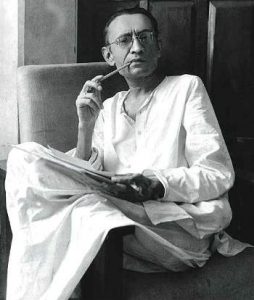
Musharraf Alam Jau’s story “Suarbaadi” is a settlement of the Dom people. In the story, Vinod represents a person who is motivated by self-interest. The speciality about this community is that when the circumstances are against them they blame the system but when circumstances are in their favour and they are part of the system, they criticize those who oppose the system. They sympathize with those suffering oppression in South Africa because among them are people from their community. But back home, they silently approve of the state oppression of rebels.
In Yunus Javed’s “Anaj ki Khusboo”, Jamil Baba digs graves for a living. The whole world knows that there is discrimination among Muslims while they are still alive. This story shows that there is discrimination even among the dead. The graveyard has become divided among various communities and castes. Here, there is a graveyard for the people at the top of the hierarchy and another one for people at the bottom. The word “equality” remains in usage but is nowhere to be seen being practised in Muslim society. According to the 1911 census, there are 14 castes in the Muslim community.
The missing Pasmanda characters
When a Hindi writer picks a Dalit character for his story, he does so from his own society. However, an Urdu writer sources a Dalit character for his story from Hindu society, not from Muslim society, even though the caste to which the character belongs also exists in Muslim society. Ismat Chugtai’s stories “Do Haath” and ‘Maile ka Tokara” both have Bhangi characters. They are Ram Avtar and Sitaram. This caste is also found in Muslim society. This caste is called Halalkhor in Bihar. The clan name Lalbegi. It is called Mir-Mehtar in Hyderabad. It becomes Bhangi in central India.
Shamli is a character in Razia Sajjad Zaheer’s story “Neech”. She belongs to a caste that also has an equivalent in Muslim society, where it goes by the name Kunjada. The surname used by the people of this caste is Rayine. Gopal is a character in Khwaja Ahmed Abbas’ story “Laal Aur Peela”. He represents a caste that is also found in Muslim society. The caste is known as “Kalal”.
Most of the Urdu writers have links with Ashraf Savarna Muslims. While they draw up characters, they focus on Muslim society but tend to hypocritically overlook the caste system prevalent there. The reason is that they don’t want others to know about casteism and discrimination in Muslim society. Their goal is to entrap the straightforward Pasmandas using religious cunning so that their religious and political dominance remains intact. There is a story called “Chamartoli ki Pinki” by Jaabir Hussain. Eleven people from Chamartoli have been shot dead just because a Dalit had named his daughter “Pinki”. Pinki is the favourite name for children in the well-known, upper-caste families. But the writer does not take a peek at his own society. Urdu Ashrafi writers easily spot the widespread casteism in Hindu society but are blind to the casteism and discrimination in their own society.
In Saharanpur, lower-caste families were not allowed to cook dishes that the upper-caste, Ashraf homes enjoyed. Even if an important personality visited their homes, they weren’t supposed to serve those dishes. They weren’t supposed to give their children the names of the upper-caste children. Only two people of the same caste greet each other “Assalam Alaikum”. Those from lower castes had to say Aadab and Bandagi when they greeted the upper-caste people.
Thus we see that a Dalit character and a Pasmanda character are equals in a number of ways. However, while Dalit characters are seen embracing Babasaheb Ambedkar’s thoughts and putting them into practice, gaining freedom from their sad situations and moving forward, Pasmanda characters appear to have gone back to their state of despair and inactivity.
For a detailed exposition of the concept of Bahujan literature, read Forward Press Books’ Bahujan Sahitya Ki Prastavna.
Contact The Marginalised Publications to order a copy; phone: 9968527911, email:themarginalisedpublication@gmail.com
The English edition of the book is titled The Case for Bahujan Literature, which is also available with The Marginalised Publication.
To order the books on Amazon, click here and here.
For the e-book version, click here.

